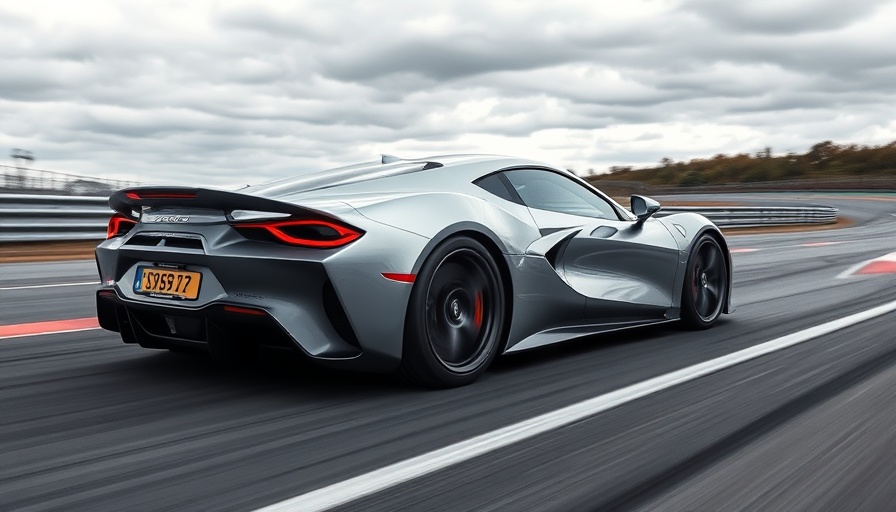
The Tale of Two Hypercars: Koenigsegg vs. Rimac
The automotive world has long been fascinated by the rivalry between Koenigsegg and Rimac, with these two manufacturers pushing the limits of performance and technology. In a recent twist, Koenigsegg has reclaimed the title for the 0-400-0 km/h speed record, achieving an astonishing time of 25.21 seconds with their Jesko Absolut. This achievement not only underscores the fierce competition between the two brands but also highlights the innovative engineering that drives their advancements. Rimac's previous record was impressive in its own right, but the rapid back-and-forth nature of this rivalry is what keeps enthusiasts on the edge of their seats.
Engineering Marvels: What’s Under the Hood?
Koenigsegg’s success wasn't merely a result of hardware upgrades; it derived largely from software refinements. The company's engineers improved the Light Speed Transmission, enabling quicker gear shifts, and fine-tuned the engine management system, enhancing the vehicle's responsiveness. The 5.0-liter twin-turbo V8 engine still generates a staggering 1,500 horsepower on E85 fuel, yet it was the additional low-end traction from the new torque control system that provided the Jesko with that explosive launch, leading to its record-breaking speed.
Rimac's Classy Comeback: Sportsmanship in Competition
Despite losing the title, Rimac’s CEO Mate Rimac responded with grace and sportsmanship, congratulating the Koenigsegg team and hinting that they are already strategizing for the next round. This sportsmanlike interaction reflects a modern trend in high-performance automotive competition where camaraderie and mutual respect prevail even in fierce rivalries. Both brands are committed to innovation, with eyes on pushing their technological boundaries further.
Historical Context: The Evolution of Speed Records
This rivalry traces back to 2017 with Koenigsegg’s Agera RS setting records that opened the floodgates for performance optimization in hypercars. Each increment of time shaved off the previous record signifies not just engineering prowess but a deeper understanding of aerodynamics, torque management, and weight distribution—factors critical to achieving peak performance. As car enthusiasts, it’s enthralling to witness such advancements, which echo the historical leaps made across the automotive world, much like how the transition from combustion engines to hybrids, and now full electrics, reshaped the industry.
The Future of Hypercars: Where Do We Go from Here?
Looking ahead, both brands are poised to continue this thrilling race. Koenigsegg’s CEO has hinted that their upcoming all-wheel drive, 2,300-horsepower Gemera could redefine what's possible in speed records. Rimac, with its commitment to electric performance, is equally set to deliver lineup upgrades which could shift the dynamics yet again. As enthusiasts, we must stay tuned as the battle between combustion and electric hypercars unfolds.
Broader Implications for the Automotive Industry
The implications of this rivalry extend beyond performance; it shapes trends within the automotive industry. As consumers, a peek into the specs of these hypercars shows what’s becoming achievable in regular cars. Innovations originally reserved for high-end hypercars eventually trickle down, with features like torque vectoring and advanced transmission systems becoming standard in even the most basic cars. Keeping abreast of these records and their technology could guide auto enthusiasts in making informed decisions about the future of automobiles.
Your Voice in the Automotive Future
As we celebrate engineering feats like the Jesko Absolut's accomplishment, we also invite you to stay engaged in the automotive dialogue. What excites you about the evolution of speed and technology in cars? With the advancement of electric vehicles and hybrid technologies, your insights could shape the narrative moving forward. Share your thoughts and experiences in the automotive space to contribute to this vibrant community.
The Koenigsegg Jesko Absolut’s triumph is a remarkable testament to the dynamic nature of the automotive industry. As the competition between hypercar innovators evolves, we encourage you to follow the developments closely. With every acceleration, new benchmarks are set, promising an exhilarating future for car enthusiasts everywhere.
 Add Row
Add Row  Add
Add 




Write A Comment